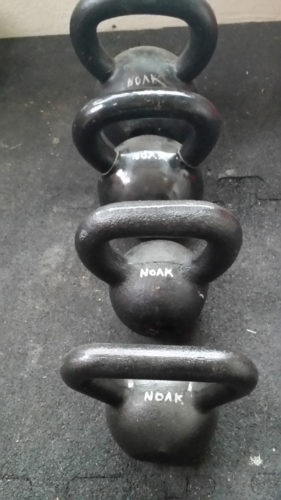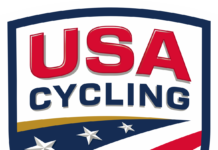By Tom Noaker with Mark Deterline –
Editorial staff note: This month we considered the importance of asking Coach Noak a big question of our own. As many athletes now gradually say goodbye to the temperate time of year in the West, they reflect upon their respective sports and their own personal performance and achievements. Many anticipate and prepare for different sports disciplines as they enjoy beautiful fall colors and as temperatures begin to drop. In Utah, athletes live in an idyllic place to enjoy sports as different – and as complementary – as cycling and cross-country skiing, as running and other snow sports. Not to mention indoor cross-training. Learn from one of the West’s best mentors.

In place of the Ask Noak Q&A column, I have been asked this month to contribute my “Three most important lessons from decades of endurance sports participation.” I tried, but just cannot reduce that much experience to just three bullet points. So, here are six recurring themes you might find helpful – or possibly just amusing…
- Pay attention to advice from experienced athletes. You cannot live long enough to learn all of the lessons acquired by those before you. Contemporary sports science and technology have made private coaching universally available, but too often knowledge of the sort needed doesn’t begin with information, it begins with experience and perception.You may not find the Holy Grail that leads to gold medals, but eventually trends in responses from multiple sources will generally steer you away from the cul de sac of parked athletes. Of course, not all advice is reputable – an example: In my earliest category seasons of competition, a certain “respected” individual would occasionally dispense dead end training advice to monitor the time to failure of his un-suspecting subjects. “Trust but verify”; not all PhD’s have a background in ethics.
- Consistency is the glue that binds training plans. Nothing disrupts a plan more than skipped days and inconsistent efforts. Most amateur athletes have time constraints, but within those restrictions maintaining consistency – not just in the micro but also macro plan – is the key to enhanced gains. It is easier to boost duration or intensity on any regularly scheduled training day than it is to randomly add additional sessions or hours.Whenever your training and racing are compromised, it is best to return to “plan A” ASAP. Attempting to regain lost ground quickly is an invitation to over-training and/or injury, and either of those two conditions can scuttle an entire season.
- Rest is as important as effort. Without proper recovery, consecutive days of hard training or racing are counterproductive. Much like high altitude climbers, even the pros experience a performance decline during the later stages of grand tours. While you may not experience the catabolic effects of these extreme situations, the benefits of progressive overload are muted without adequate rest. Sleep is often the sacrificial element in our culture, and the price an athlete pays is a plateau in performance that leads to stagnant or degraded results. It may sound heretical to suggest, but even a 10 to 20-minute random catnap can boost your body’s ability to bounce back from a particularly tedious day.
- Go long. This probably seems contrarian to the abundance of emphasis on intensity training for the “time constrained” athlete, but the endurance paced “duration” or “fat burning” workout does wonders, not only for base fitness, but also mental toughness. Treat it like a prison break from the incarceration of intervals. Even If you need to invoke dawn patrol rules to fit in extra hours around weekend chores, a periodic over-distance day will help sustain an extended race schedule.
- Strength training matters. This is an area that cannot be neglected, regardless of age or experience. Years ago I was a subject (victim) in a graduate level project during the “off season” that emphasized heavy weight room training for endurance athletes. The subsequent lean muscle mass gain and an ability to press huge stacks in the leg sled resulted in very marginal gains on the bike. But the experience led to functional resistance training; full range of motion around multiple joints involving concentric and eccentric contractions of long chain rather than isolated muscle groups. It’s less about one rep max or max reps, and more about movement patterns through full range of motion. You don’t need a complete gym or even full hour sessions to realize meaningful gains from Kettlebell and calisthenic workouts, but you do need professional instruction to avoid developing bad habits. After a year of “home schooling” with books and YouTube videos, I enrolled in a Russian Kettlebell cert where all 16 attendees (including myself) demonstrated incorrect form in multiple movements that would likely have invoked future injuries. The first rule of strength training; “Do no harm.”
- Stretch. Do active stretches before (activation) and static stretches post workout, plus foam roll time to “iron out” the knots. Next to sleep deprivation, this is one of the areas most frequently neglected, when in fact it should be the last thing omitted. The benefits of stretching are maximized when not rushed. Even 20 minutes set aside each day can be significant in a successful approach to training and overall well being.
Tom Noaker is a well respected and accomplished sales rep and business owner in both the bicycle and ski industries. He has won sixteen State Championships in cycling across four age divisions, as well as three Mountain Bike National Championships, and competes as a cross-country skier at the elite and elite Masters levels. Tom coaches some of the best young riders in the country, and is board president of the South Summit Trails Foundation.






